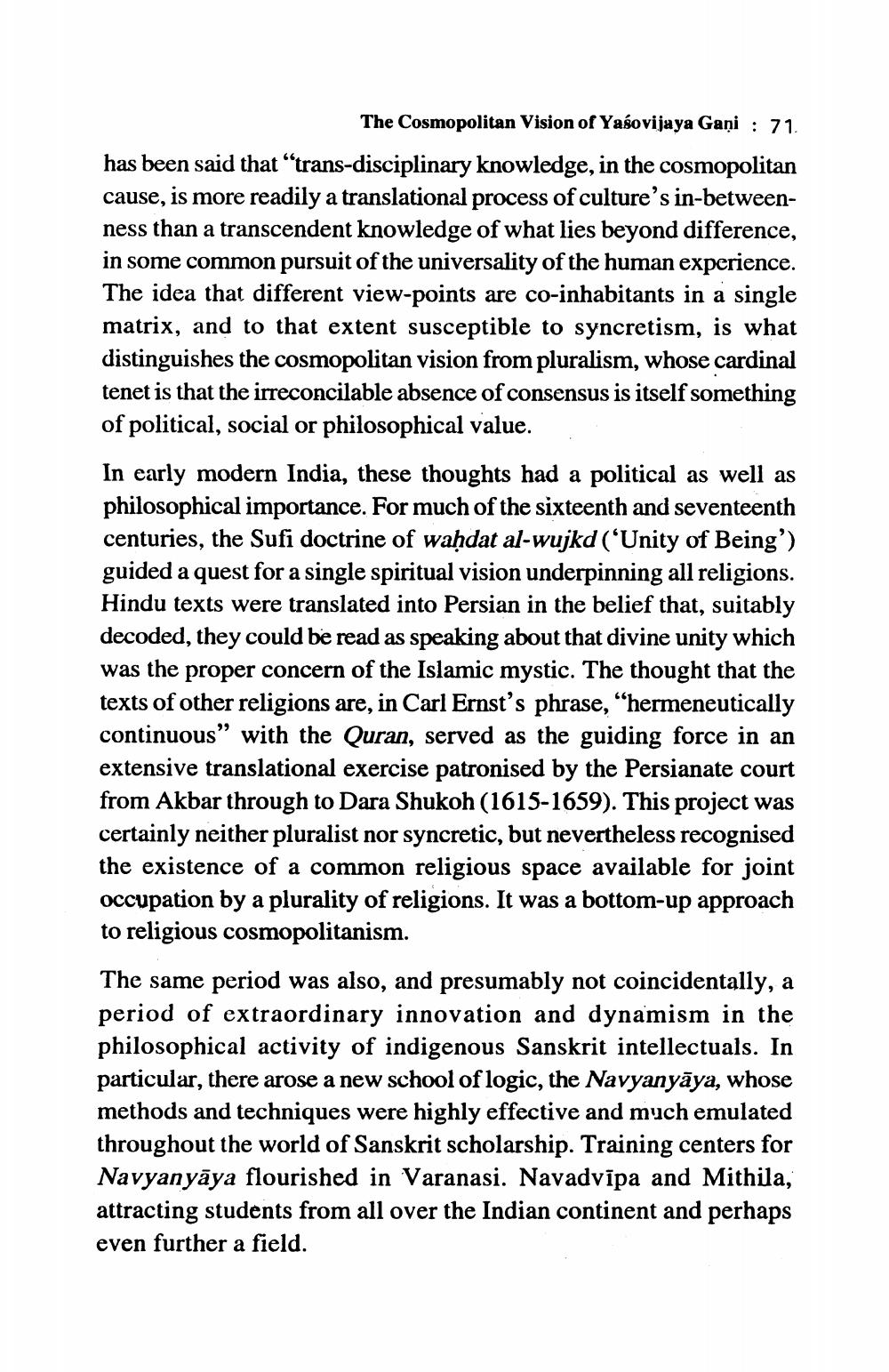________________
The Cosmopolitan Vision of Yasovijaya Gaņi : 71. has been said that “trans-disciplinary knowledge, in the cosmopolitan cause, is more readily a translational process of culture's in-betweenness than a transcendent knowledge of what lies beyond difference, in some common pursuit of the universality of the human experience. The idea that different view-points are co-inhabitants in a single matrix, and to that extent susceptible to syncretism, is what distinguishes the cosmopolitan vision from pluralism, whose cardinal tenet is that the irreconcilable absence of consensus is itself something of political, social or philosophical value. In early modern India, these thoughts had a political as well as philosophical importance. For much of the sixteenth and seventeenth centuries, the Sufi doctrine of wahdat al-wujkd ('Unity of Being') guided a quest for a single spiritual vision underpinning all religions. Hindu texts were translated into Persian in the belief that, suitably decoded, they could be read as speaking about that divine unity which was the proper concern of the Islamic mystic. The thought that the texts of other religions are, in Carl Ernst's phrase, "hermeneutically continuous" with the Quran, served as the guiding force in an extensive translational exercise patronised by the Persianate court from Akbar through to Dara Shukoh (1615-1659). This project was certainly neither pluralist nor syncretic, but nevertheless recognised the existence of a common religious space available for joint occupation by a plurality of religions. It was a bottom-up approach to religious cosmopolitanism. The same period was also, and presumably not coincidentally, a period of extraordinary innovation and dynamism in the philosophical activity of indigenous Sanskrit intellectuals. In particular, there arose a new school of logic, the Navyanyāya, whose methods and techniques were highly effective and much emulated throughout the world of Sanskrit scholarship. Training centers for Navyanyāya flourished in Varanasi. Navadvīpa and Mithila, attracting students from all over the Indian continent and perhaps even further a field.




